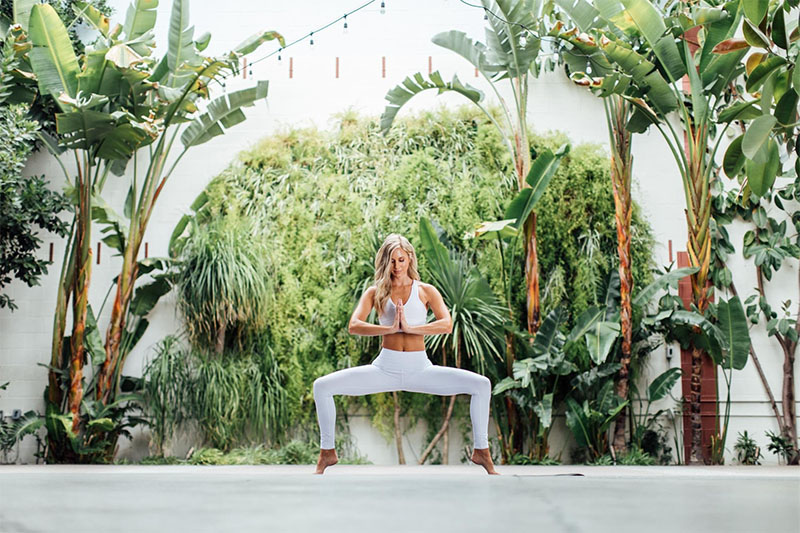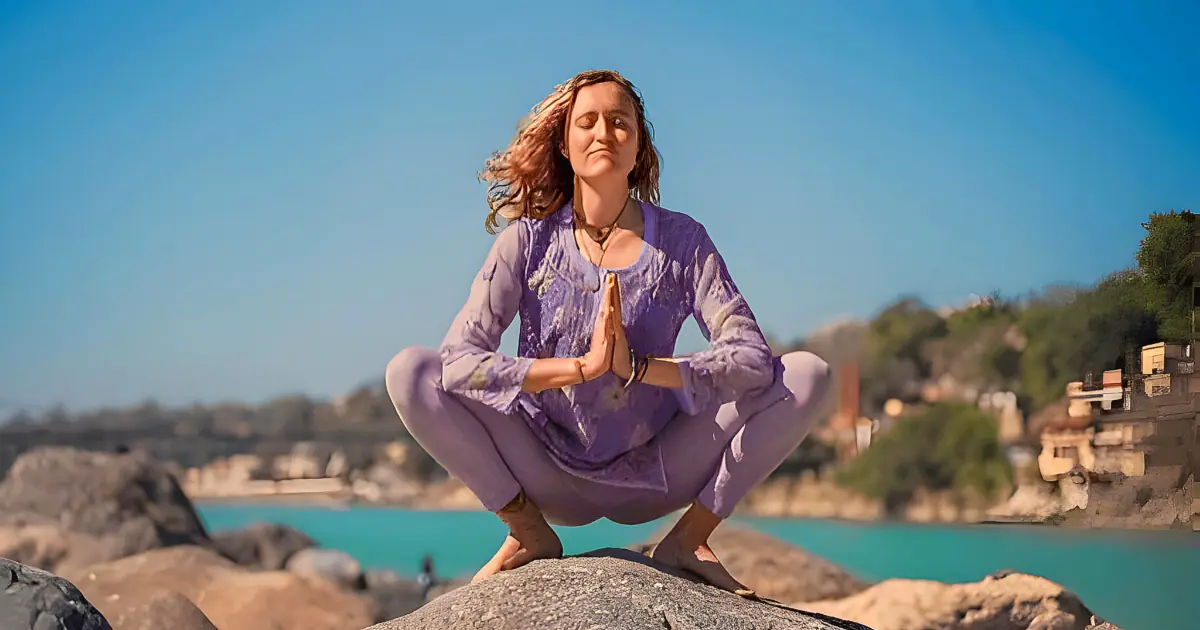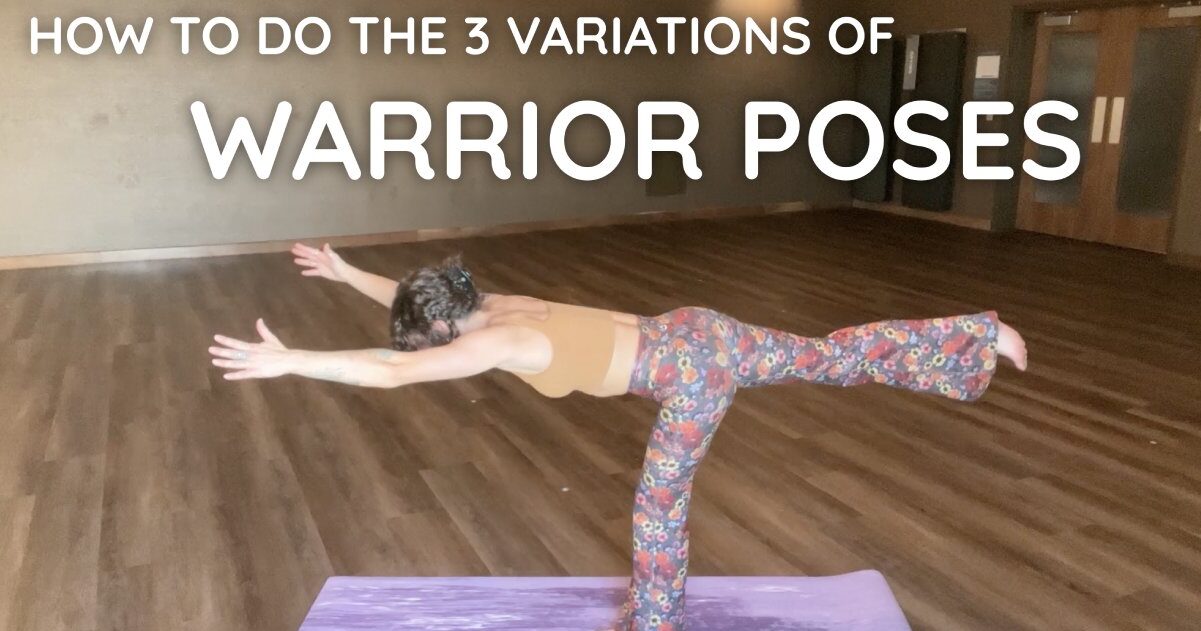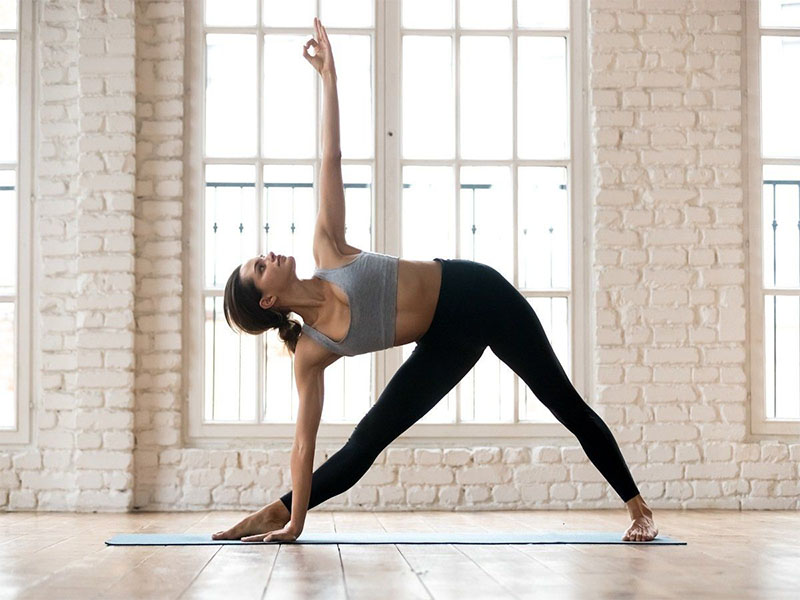Wherever you may be sitting to read this article, first briefly check in with your posture: were you aware of the shape of your spine before reading this sentence?
One of the most often-cited benefits people experience from practicing yoga is greater mindfulness and body awareness; and, where posture is concerned, most of us could use a bit of help with that! Practicing back bends and heart-opening yoga poses is a fantastic way to focus your attention on spine and posture, while building strength and flexibility at the same time.
We also know that back-bends can look impressively intimidating to beginner yoga students, which is likely why you’ve found your way here, looking for guidance! In this pose breakdown, you’ll learn step-by-step instructions for this classic back-bending Wheel Pose, so you can safely practice this intermediate yoga posture.
You might hear this pose called by one of two Sanskrit names: Chakrasana (coming from the Sanskrit word for wheel, chakra), or its more common name Urdhva Dhanurasana (upward bow pose). In terms of body position, you’ll notice that Wheel forms the same shape as regular Bow Pose (Dhanurasana), just flipped around! Typically, you’ll practice Wheel Pose as a peak pose in a heart-opening yoga sequence; if you are more advanced in your yoga journey however, Wheel can be a preparatory pose for other inversions or back bends.
Still unsure if Wheel Pose should be in your yoga wheelhouse? Once you discover all the benefits of this asana, you’ll definitely be inspired to give it a try!
Benefits of Wheel Pose
Given the prevalence of sedentary habits in today’s society, it’s more important than ever to be sure you maintain strength and mobility as you age. As a heart-opening posture, you can guess that Wheel Pose opens up your chest and upper back, to help reverse the negative effects of sitting and slouching. But as soon as you try it for yourself, you’ll realize Urdhva Dhanurasana is a pose that stretches and tones your whole body! Here’s what you can expect to experience with regular practice of Wheel Pose:
- stronger gluteus maximus, leg muscles (hamstrings), arms, back, and shoulders
- more open shoulders and chest muscles
- better-flowing energy in the front body through stretching the abdominal muscles and hip flexors
- greater spinal mobility, reducing back pain
- improved digestion through stretching the abdomen to stimulate internal organs
- better posture, reversing the overly-rounded upper back caused by sitting at a desk for many hours
- enhanced mood and increased energy
- better proprioception (the sense of where your body is in space) and body awareness
- more opened mind, with the ability to shift your perspective
Now you can see that Wheel Pose is amazing for your body from every side — front to back, top to toe, and head to heart. Try it out for yourself by following the instructions in the next section!
How To Practice Wheel Pose
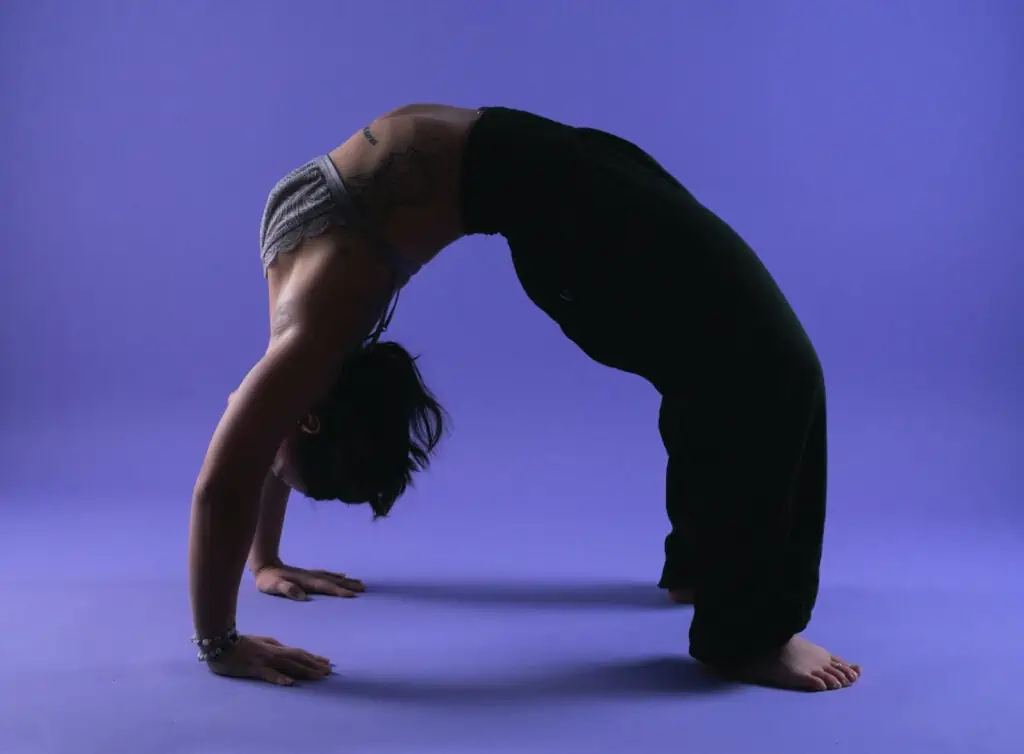
Below you’ll find step-by-step instructions with detailed alignment cues for practicing Wheel Pose. In case this is a new posture for you in your practice, we’ve broken it into down into three phases; if you are still building up strength and flexibility, you can pause at Phase 1 or 2, rather than forcing yourself into a Full Wheel shape when your body may not be ready.
Take your time with each step to be sure you feel the correct alignment and muscle engagement. Lastly, listen to your body: if Full Wheel pose feels too intense, go back to the previous step and work from there, building strength and confidence.
- Begin by lying on your back on your yoga mat. Bend your knees and place your feet flat on the floor at a hip width distance, aligned underneath your knees.
- Lift your arms and bend your elbows to bring your hands to the floor just above your shoulders, with your fingertips pointing in the same direction as your toes. Press your palms into the floor.
- Take a breath in; then, as you exhale, engage your core by pulling your navel in and up.
- Phase 1: Press firmly through the soles of your feet; as you inhale, squeeze your glutes and lift your hips, as in Bridge Pose. Energetically kick your heels back towards your glutes to engage your hamstrings. Exhale.
- Phase 2: With your next inhale, press into your hands to lift your shoulders up and chest up off the floor. Keep your elbows hugging in Let your head drop back so that the crown of your head just touches the floor, without too much weight placed on the neck. Exhale. (This position is sometimes referred to as Half Wheel Pose).
- Phase 3: With one more inhale, lift up into the full expression of Wheel Pose: push the floor away to straighten your arms, lifting your head off the floor. Keep your elbows and inner thighs squeezing in toward your midline.
- Gaze straight back and press your chest open in the same direction — think about pressing your rib cage away from your hips. Continue to lift up and out of your shoulder joints, keeping space between your shoulders and ears. Draw your shoulder blades together and press through your feet so your chest moves backward slightly, over your hands, to extend through your upper back.
- Hold your fullest expression of Wheel Pose for 5-10 breaths. When you are ready to exit the pose, stat to bend your elbows and tuck your chin as you lower yourself down to your mat with control, rolling down one vertebra at a time.
- Once your back and hips are resting on your mat, bring your arms back down by your sides and take a counterpose, hugging your knees into your chest, or with your legs extended straight into Savasana.
Alignment Pro-Tips and Teaching Cues
Tip #1: keep your knees aligned with the hips, and your toes pointing forward. If your knees drop together or splay out to the sides, you risk injury to your knee.
Tip #2: try to feel an even curve throughout your entire spine, to avoid feeling compression in the lumbar spine (lower back).
Tip #3: the backbend of Wheel will feel more intense if you have your feet close to your body. When just starting out in Wheel pose, start with your feet just beyond your fingertips when your arms are at your sides. Once you are up in Full Wheel, if you have the flexibility, then you can walk your feet closer to your shoulders.
Contraindications
Being an intense backbend and full body stretch, there are several cases in which you should skip or substitute Urdhva Dhanurasana. These conditions include:
- Spinal injury or recent back surgery
- Bulging or herniated discs
- Injury to the wrists, shoulders, or elbows (including carpal tunnel syndrome or tendonitis)
- Glaucoma; blood rushing to the head in inverted poses can cause more pressure in the eyes)
- Headache or migraine, dizziness
- Pregnancy; you may risk developing diastasis recti where the abdominal muscles separate, in which case you can try Bridge Pose or Camel Pose as a substitute
Modifications for Wheel Pose
No matter where you are in your practice, using yoga props can be a fantastic way to provide support in the deep backbend of Wheel Pose. Here are a few ways you can make this asana more accessible and comfortable for you.
Yoga Wheel
A yoga wheel is a circular shaped prop used in many types of movement, which provides support especially for the spine. If you are unable to straighten your arms in Upward Bow Pose (Wheel), place a yoga wheel underneath your mid and lower back. Then, bend your elbows and grip the sides of the wheel.
Need a recommendation for a yoga wheel? We’ve reviewed several here to help you find the perfect fit for what you need.
Blocks and a Wall
To relieve pressure from your wrists, you can use two blocks under your hands. Place the blocks against a wall at a 45-degree angle. As you lift up into Wheel Pose, straighten your arms and press your wrists, forearms, and chest towards the wall.
Yoga Strap
When learning correct alignment for Urdhva Dhanurasana, you can loop a yoga strap around your upper arms. This will help you learn to keep your elbows hugging in toward your body rather than splaying out to the sides, which is a common mistake beginners make.
Variations Of Wheel Pose
If you are unable to practice inversions due to a medical condition, or if you have wrist pain, substitute Wheel Pose for one of these alternative back-bending yoga poses to gain many of the same benefits.
Bow Pose
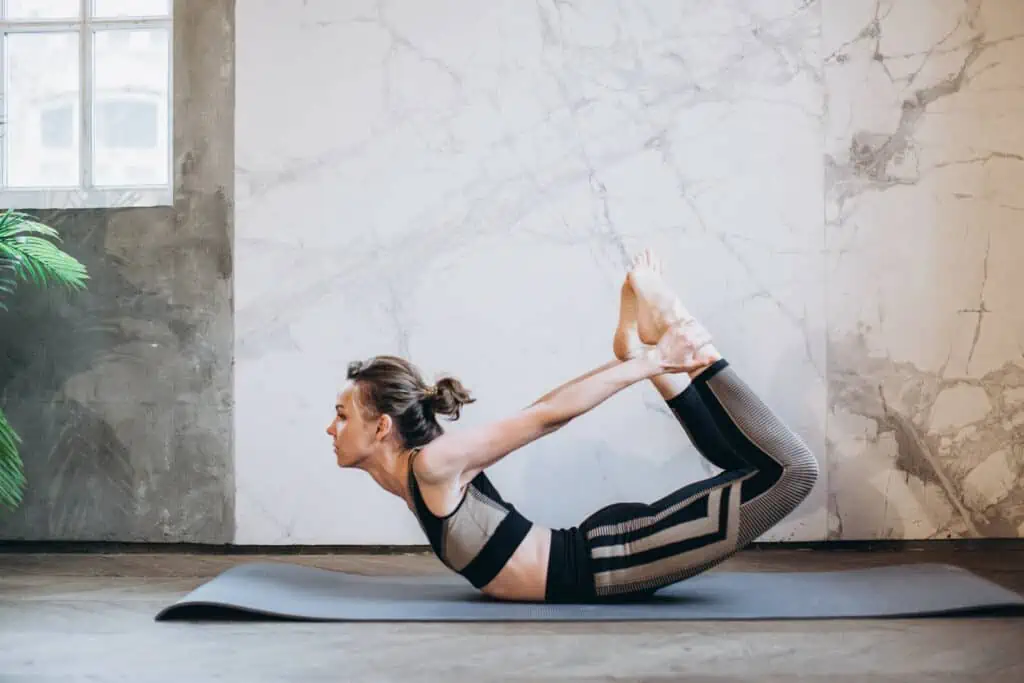
As the name suggests, Bow Pose is essentially the inverse of Wheel Pose (Upward Bow). The body shape is quite similar, but in Bow Pose you are balancing on your abdomen, rather than your hands and feet.
To learn more about Bow Pose along with detailed practice instructions, visit our All About Bow Pose article!
Camel Pose

Camel is another back bending asana you can try if inversions are not possible for you at the moment. You’ll experience the same spinal extension while opening the chest and shoulders, without bearing so much weight on your wrists.
If you’d like to try Came Pose but are unsure where to start, check out our Guide to Camel Pose and follow the step-by-step instructions.
Preparatory Poses
Wheel Pose is a deep backbend which calls for your whole body to be sufficiently warmed up, otherwise you run the risk of injury. So, be sure you take yourself through solid practice, including Cat/Cow Pose and some Sun Salutations, which will help mobilize your spine and get your entire body working.
While you warm up to your peak pose of Upward Bow Pose, try to include the following preparatory poses as well. We’ve recommended these specific poses to help you safely and gradually work up to Wheel Pose.
Puppy Dog Pose

Puppy Pose is a fantastic heart-opening pose that will soften your chest and shoulders, allowing you to safely enter Wheel Pose and move into a deeper stretch in your upper back.
If you’ve never practiced Puppy Dog Pose before, learn all about it here!
Dolphin Pose
Dolphin Pose will help strengthen your upper body and activate the muscles of your arms and shoulders, which will be put to work when you lift your body up into Urdhva Dhanurasana (Wheel).
Check out our Dolphin Pose guide if you’d like a reminder on proper alignment of this chest and shoulder activating asana!
Bridge Pose

Bridge is an essential building block of Upward Bow Pose, making this posture the most important of these preparatory poses — definitely don’t skip it! With Bridge, you’ll set up your correct alignment for Wheel while warming up your spine with a less intense backbend.
Need a refresher on how to get into Bridge? Follow the instructions detailing proper form in our Bridge Pose article.
Half Wheel Pose

As mentioned in the “How To Practice Wheel Pose” section of this article, Half Wheel sometimes refers to an in-between point between Bridge and Full Wheel, before your push yourself all the way up into the complete backbend. However, there is also a standing backbend stretch known as Half Wheel in some schools of yoga.
To try this standing backbend by beginning in Mountain Pose, standing at the top of your mat with feet hip width apart. Bring your hands to your lower back just above your hips. As you breathe in, grow taller through the crown of your head. As you exhale, lift your chest to the sky as you bend your upper body backwards as you press your hips forward. Hold your standing backbend for 3-5 breaths, then engage your core to stand upright, returning to Mountain Pose.
Counterposes to Follow Up Wheel Pose
The goal of a counter pose is to rest the muscles that were previously working. It is not necessary to do the complete opposite movement — for example a forward bend after a backbend — just to bring the spine into neutral position and let the body rest. With that in mind, here are some recommended counterposes to practice after Urdhva Dhanurasana.
Knees Into Chest

After you lower down from Wheel Pose, this simple stretch will feel great on your back. Simply draw both knees in towards your chest, and wrap your arms around the outsides of your legs. Try to keep your tailbone reaching forward and down as you squeeze your legs in close to your body. Hold for a couple of deep breaths, then release your legs back down to your mat.
Reclining Bound Angle
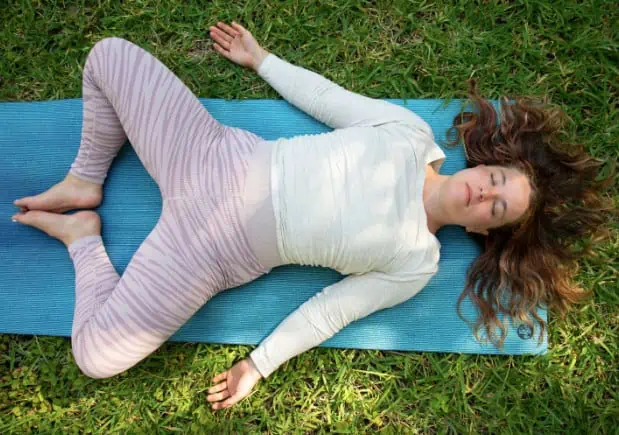
Here’s another relaxing and restorative counterpose that you can try after Urdhva Dhanurasana. Lower your body down from Wheel Pose and bring your arms by your sides. Let your knees fall open in opposite directions and bring the bottoms of your feet together.
If needed, you can view more detailed instructions for Reclining Bound Angle in the “Variations” section of this article.
Savasana
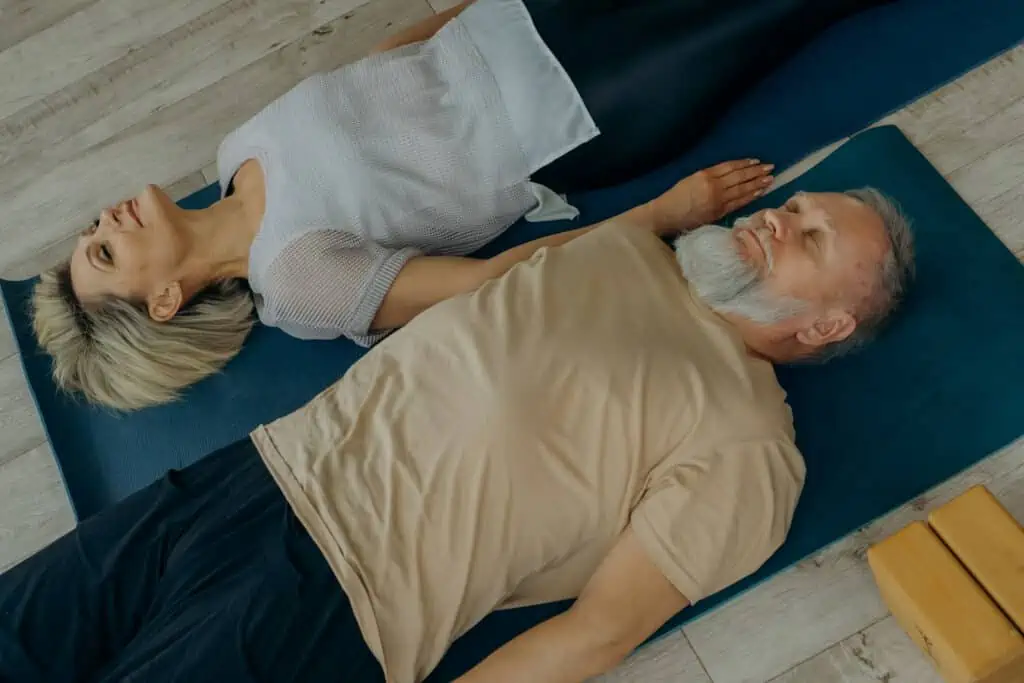
Often practiced as a peak pose, Urdhva Dhanurasana can be an intense experience as it stretches the whole body, and opens the heart space. For this reason, Savasana is an excellent choice to practice after Wheel to allow your body to integrate the energetic shift you’ve just experienced. Simply lower yourself down to your mat and extend your legs; bring your arms to your sides with your palms facing up and let your whole body relax.
To learn more about all the wonderful benefits of Savanasa, read our complete guide to Corpse Pose!
Advanced Variations of Wheel Pose
Once you feel confident in your Wheel Pose and can comfortably hold your full Wheel for at least 10 breaths, you’re ready to explore the pose by adding one of these challenging variations.
One Legged Wheel

From classic Wheel Pose, walk your feet in a little closer towards your hands to shorten the pose. Place one foot slightly closer to your center and ground your foot. Bend your other leg, drawing your knee in towards your chest. From there, extend your leg skyward. Stay in the pose for a few breaths, then place your leg back down and switch sides.
Straight Legged Wheel

Come into classic Urdhva Dhanurasana. Keep pressing into your hands and opening through your chest. Start to gradually walk your feet out (keep them separated at hip distance), lengthening your stance until you can fully straighten your legs.
Forearm Wheel
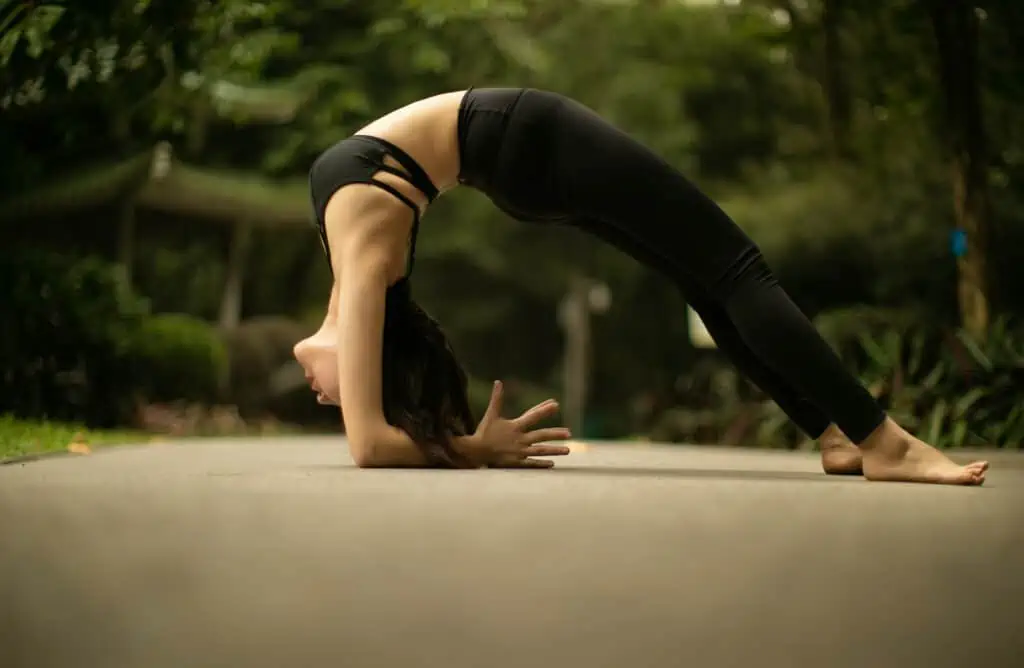
Deepen your backbend even more by lowering down to your forearms from traditional Wheel Pose. Start by shortening your stance a bit, moving your feet slightly closer toward your hands (remember to keep your feet separated at hip distance). Keep hugging your thighs inwards and squeeze your shoulder blades together as you lower down one arm at a time with control. Your forearms and elbows should be placed a shoulder distance apart.
To exit the pose, reverse the process and place one palm at a time on the floor to press back up with straight arms into Urdhva Dhanurasana.
Common Questions About Wheel Pose
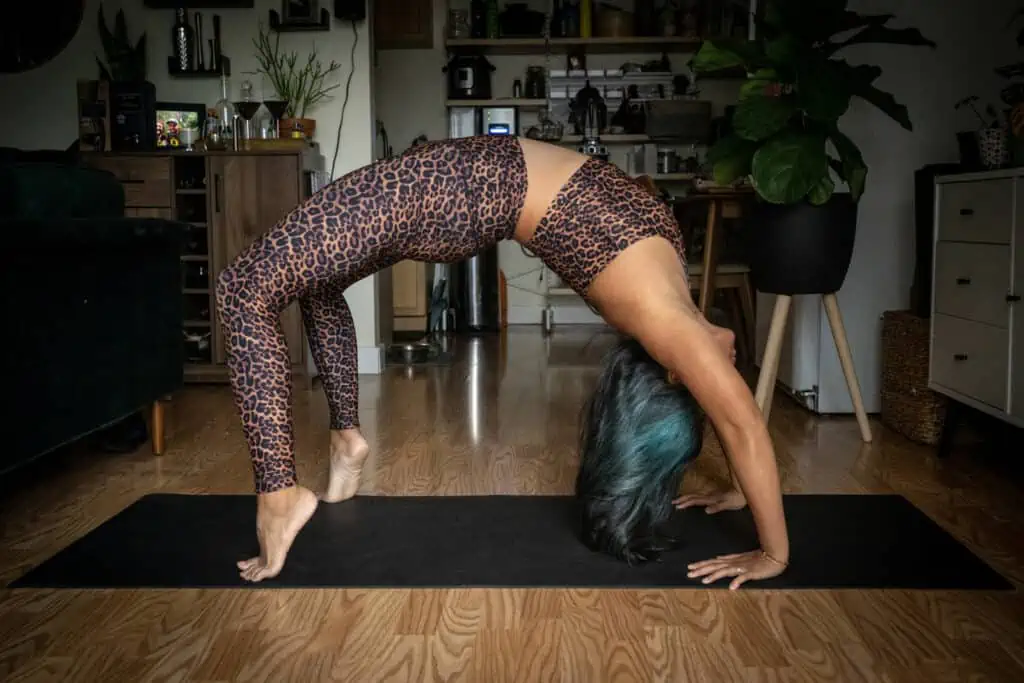
u003cstrongu003eIf I am a complete beginner, what muscles should I focus on to build strength for Wheel Pose?u003c/strongu003e
You’ve learned in this article that Wheel is a full body stretch that requires flexibility but also strength. Focus on strengthening your arms and upper body in order to feel confident in progressing towards this intermediate asana. Practice poses such as Plank, Reverse Table Top, andu003ca href=u0022https://www.theyoganomads.com/locust-pose/u0022u003e Locust Poseu003c/au003e to tone the muscles of your arms, shoulders, and back.
u003cstrongu003eHow long should I hold Wheel Pose?u003c/strongu003e
If you are a beginner, start with holding your fullest expression of Urdhva Dhanurasana for 15-30 seconds, or 3-5 breaths. If you’ve already achieved Full Wheel and are progressing towards a more advanced variation, try holding the pose for up to one full minute.
u003cstrongu003eI feel crunching in my lower back in Wheel Pose. What should I do?u003c/strongu003e
Remember that ideally, you want to have one even curve along your whole spine, rather than a sharp angle in your lumbar spine. To avoid this, step your feet a little further away from your glutes as you are setting up. Focus more on opening your chest and shoulders rather than pushing your hips as high as possible.


